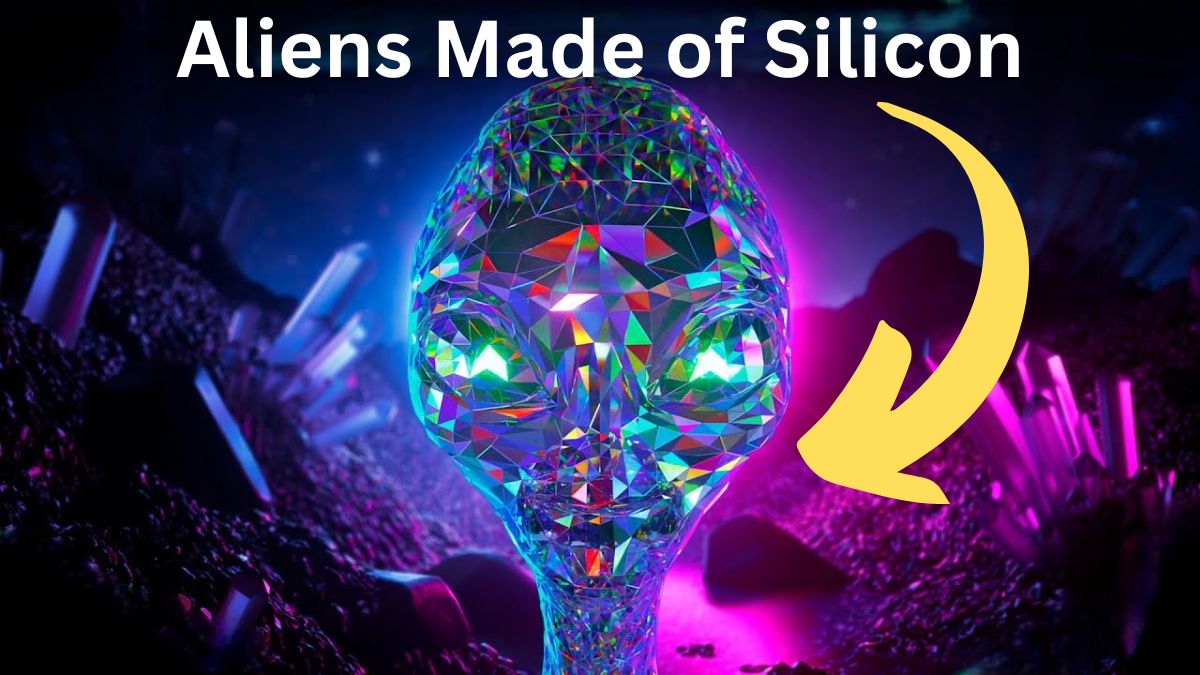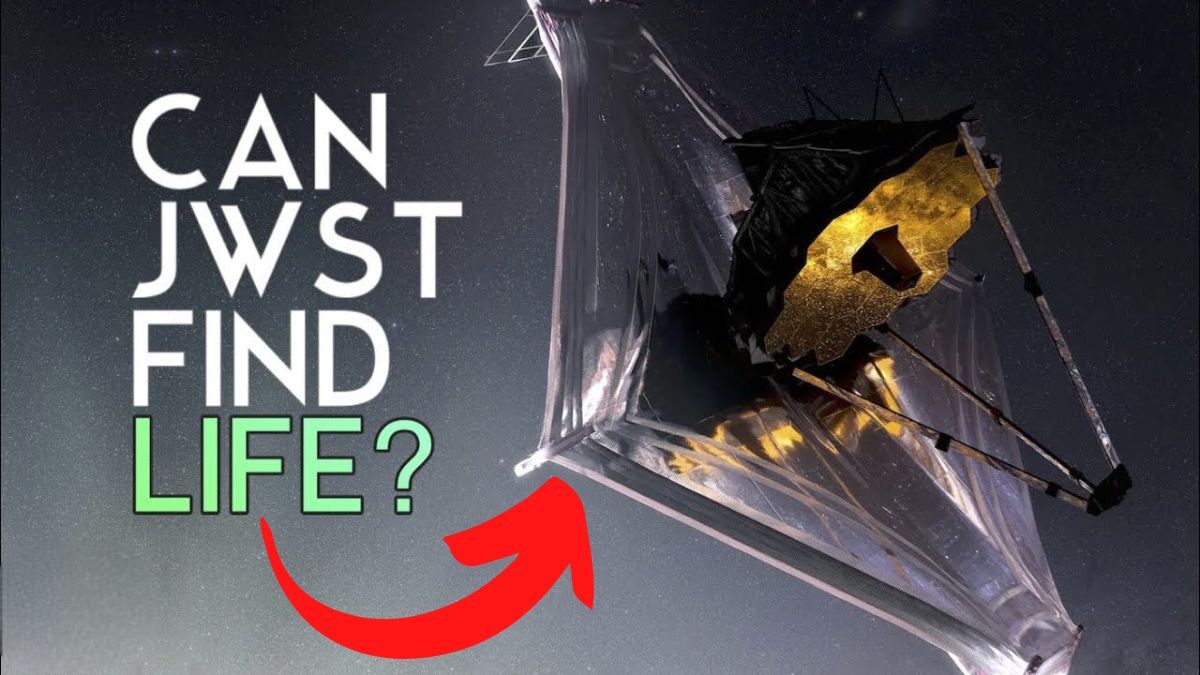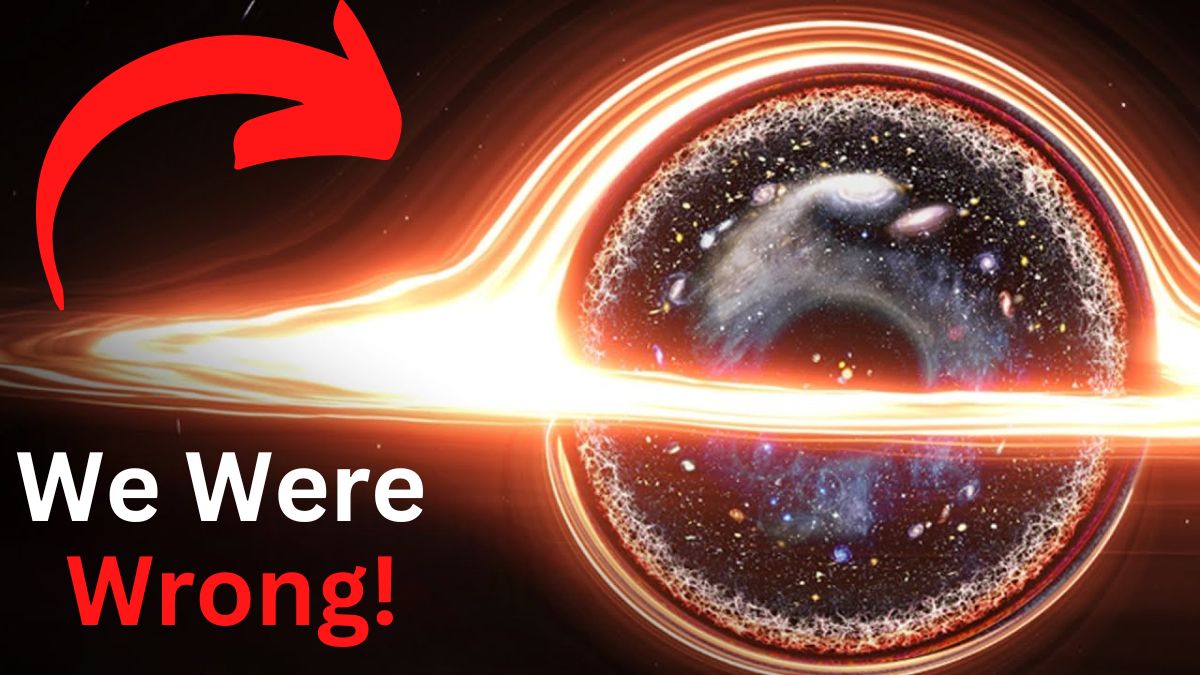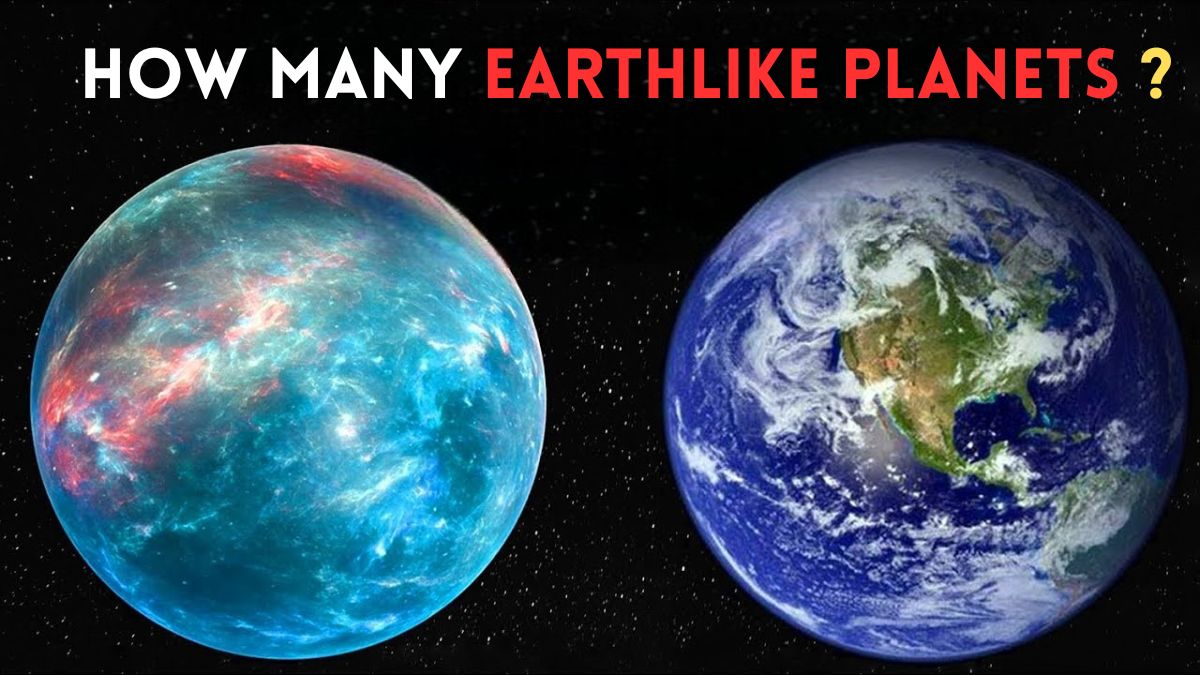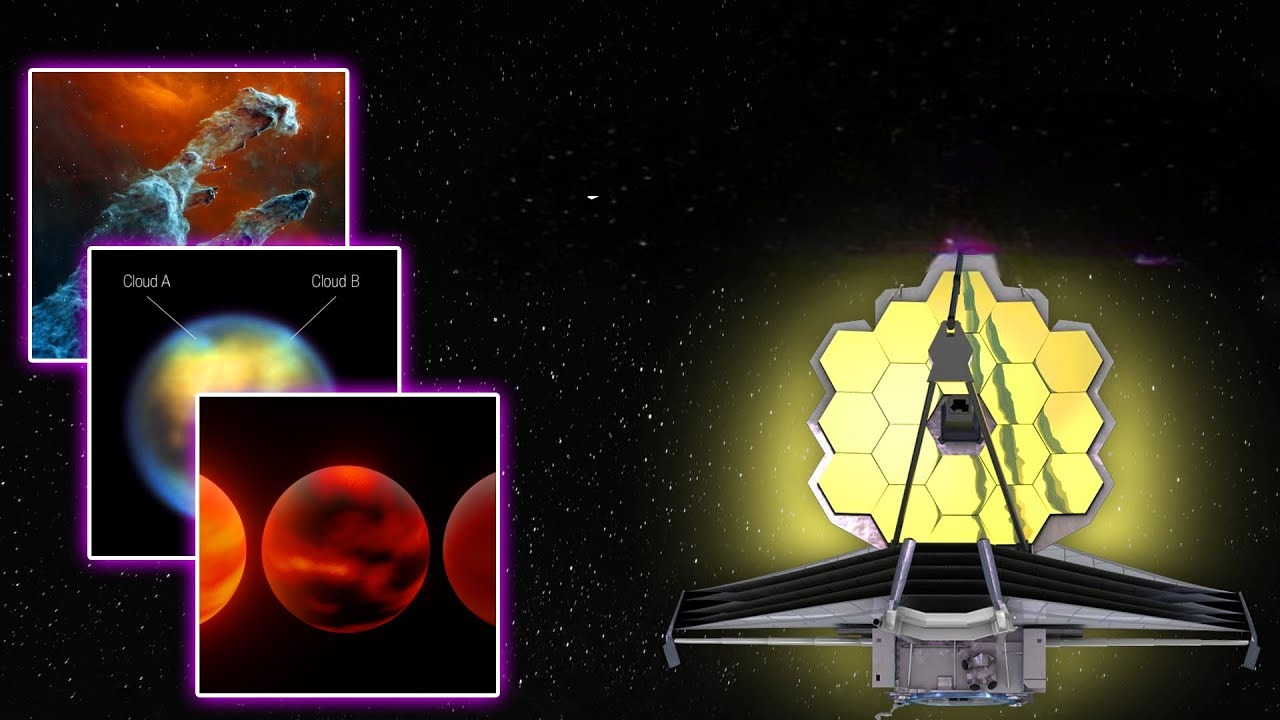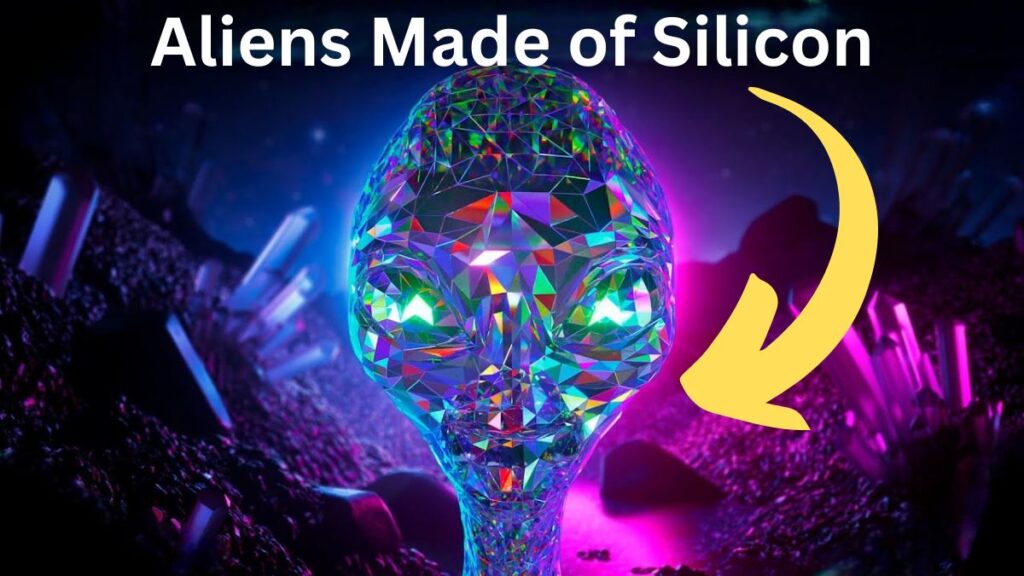
Life as we know it is carbon-based, but does it have to be that way?
There is another element on the periodic table that shares some of the key properties of carbon but is far more abundant on most planets.
I’m talking about silicon.
So could there be silicon-based life out there?
All of the chemical machinery of life – all biochemistry – is based around the carboan atom.
At least as far as we know.
If we want to understand the possible diversity and abundance of life in the universe, we need to ask whether this is the only option. Perhaps the most popular alternative – at least in science fiction – is silicon-based life.
We have the xenomorphs of the Alien series to the giant space worm in Star Wars and many, many others.
So why are scifi writers so into silicon-based life?
Because it really is the most promising non-carbon prospect due to its chemical similarity.
It’s also more abundant on Earth than carbon.
So, can life be based on silicon?
And if so, why aren’t we silicon-based?
When we say life is carbon-based, we don’t just mean that life uses carbon a lot – we mean that literally every aspect of the molecular machinery that makes up life is based around the chemistry of carbon.
Carbon chains and rings form the scaffolding for an enormous variety of molecules which enable the raw machinery of life – from DNA & RNA to amino acids & proteins to all the structures built by these.
Biochemistry is by definition the chemistry of Carbon.
In fact, biochemists don’t even write Carbon in their formulas, they just draw bent lines and they know that’s supposed to be a Carbon atom.
So why is carbon so favored by life?
Is it just that the first life form happened to be carbon based, so everything else got stuck with that atom?
Or is carbon-based chemistry really the only way life can happen anywhere, ever?
Ultimately, carbon’s incredible utility comes down to the way it bonds with other elements, which enable just the right balance of reactivity and stability.
To understand this, we need to think about energy.
Nature will always try to get to the lowest energy state that it possibly can.
A stick of dynamite for example, is in a high energy state due to all the energy stored in the chemical bonds of its nitroglycerine.
If the atoms find a way to a lower energy state they’ll go for it, explosively releasing that energy in the process of converting the nitro to smaller molecules.
Nitroglycerine is unstable because it only takes a little energy to break its tenuous bonds, which in turn releases a lot more energy than went in, initiating a chain reaction.
That reaction only goes in one direction, because it’s not energetically favourable to reassemble all the smaller molecules back into nitro.
Life is basically an ongoing chemical reaction.
You don’t want the chemistry of life to be unidirectional.
You don’t want all the raw ingredients to end up in the same overly-stable molecules, with no way back.
That means the reaction is over, which for life means …well, death.
At the same time, you want the molecules doing the work of life to be stable enough – they need to last long enough to do their jobs.
In other words, you want a balance of reactivity and stability.
Let’s figure out what elements might be good for reaching this balance.
And to start we’re going to open up to the entire periodic table and see what we can rule out.
The key is in what types of chemical bonds a given element can make.
There are three main bond types: ionic, metallic, and covalent.
Ionic bonds are way too unstable, while metallic bonds result in repeating structures – crystals – which don’t have the chemical variety needed for life.
Covalent bonds are really the only option.
In these, atoms share electrons with one or more neighbors in order to fill up their outer or valence shells.
For example, carbon has 4 valence electrons.
It wants 8 for maximum stability.
It achieves that stability by connecting to 4 hydrogen atoms and sharing their single electron.
This also gives each of those hydrogen atoms one more electron to fill up its own valence shells.
The result of this arrangement is methane.
The cool thing about covalent bonds is that there are countless ways to do this electron sharing, enabling enormous diversity and modularity.
For example, if we remove a hydrogen from two methane molecules and stick them together you have ethane.
Now replace one of the hydrogens with an oxygen and we have ethanol.
Covalent bonds are the key to the complex and resilient molecular structures needed for life.
With this in mind we can look at the Periodic Table and rule out all the elements that form mostly ionic or metallic bonds, which is actually most elements.
We’re keeping things that are good at forming covalent bonds, even if they also sometimes bond in those other ways.
We can also rule out Noble Gasses since they are barely reactive at all, and the Halogens, because they’re just too much trouble.
It’s hard to get them to form covalent bonds with more than one element at the same time, and when they react with something it’s usually in an explosive manner.
Finally, we’re going to scrap elements in rows 4 and below.
Although these may form covalent bonds, these atoms are so large that the nucleus doesn’t hold the electrons with enough strength, leading to dangerously weak molecules By the way, this is the reason Arsenic is toxic.
Cells can accidentally build molecules using Arsenic in place of Phosphorus due to them having the same number of valence electrons.
When that happens the resulting molecules will break, destroying important structures in the cell, or interrupting important processes, and if this happens too much the cell will die.
In the end we are left with only seven elements: Hydrogen, Carbon, Nitrogen, Oxygen, Silicon, Phosphorus, and Sulfur.
Of these, all but silicon are considered fundamental building blocks of life on Earth.
Other elements are used by life for very specific functions, but hydrogen, carbon, nitrogen, oxygen, phosphorus, and sulfur are the most important.
And of these, carbon is by far the more critical because it provides the scaffolding of all biochemistry.
The reason it’s good for this is that it forms strong bonds with itself, and does so in a variety of ways.
In fact, of the 6 building blocks of life, only carbon can form both 1-D and 2-D structures with itself.
In our process of identifying elements that may be useful for life we got to the 6 main building blocks plus silicon.
But why did silicon get dropped by evolution?
This seems weird because silicon is chemically similar to carbon, also having 4 valence electrons.
Silicon can imitate Carbon and form long chains, and rings, and the resulting molecules often have similar properties to molecules made with Carbon.
To give you just one example we can make Silicon oils, and they feel and look just like other kinds of oil.
It’s the only other element capable of forming complex covalent scaffolds and supporting a large diversity of molecules.
Despite all of this, Earth life makes less use of silicon than it does of many other trace elements like iron.
This seems extra strange when you remember that silicon accounts for more than 28% of the mass of Earth’s crust, in all them silicate rocks.
On the other hand, Carbon makes up only around 0.
02% of the crust.
This tells us that carbon must have substantial advantages over silicon.
So let’s talk about some of the issues with silicon as a basis for life.
One huge one is that silicon-based molecules tend to be far more reactive to water than carbon-based.
In fact, although silicon chemistry is extremely diverse, most complex silicon molecules are unstable in water.
You can see how this would be a problem for silicon-based life on our very watery Earth.
In general, life needs a solvent – a liquid medium that allows molecular machinery to move around and interact.
Water is incredible for this.
Its thermal stability, power as a solvent, and abundance through the universe make it the best, and perhaps even the only decent choice of the base solvent for life.
The instability of most silicon molecules in water is actually a huge blow to the viability of silicon-based life.
However water is not the only option.
A much greater variety of silicon-based molecules are stable in liquid hydrocarbons – which are present on the moons of the gas giants, and even in sulphuric acid, which is abundant in Venus’s atmosphere.
Both cases have their issues – liquid hydrocarbons are cold, which among other things means they have trouble holding in solution the large, complex molecules that known life relies on.
Sulphuric acid is chemically extremely aggressive, perhaps too much so for life to get started.
On the other hand, xenomorphs are silicon-based and they do have acidic blood – makes sense that they’re silicon -in-sulphuric-acid-based.
If that’s what Venusian life is like, let’s cancel the cloud city construction program before the space horror begins.
There is one way to potentially get silicon-based life in water – and that’s by coupling silicon with either carbon or oxygen for our scaffolding molecule.
Chains of these pairs of atoms can produce some chemical diversity.
However neither case seems to provide significant advantage over just using carbon chains.
Another reason that silicon seems implausible as a scaffolding element for life is that the stuff really, really loves forming bonds with oxygen.
Silicon forms stronger bonds with oxygen than with any of the other “building blocks of life”, and certainly more so than with other silicon atoms.
Silicon-based molecules are easily broken by oxygen, and silicon-oxygen bonds are hard to break in turn.
That means reactions tend to go in one direction when there’s oxygen available.
And the strength of the silicon-oxygen bond is perhaps the main reason that silicon is rarely used by life on Earth.
Although there’s an awful lot of it, Earth’s silicon is locked up in rocks and is inaccessible to life.
On the other hand, most of Earth’s carbon is in CO2 in the atmosphere, which is relatively easily accessible through photosynthesis.
There is one sense in which the strength of the silicon-oxygen bond could be useful for life, and that’s in energy generation.
Let’s think about where our energy comes from.
It’s from the conversion of oxygen molecules – which contain a ton of energy in their bonds – into CO2 molecules – which contain very little.
The simplest way to get that energy is to set something on fire, which works great for steam engines but not so great for cells.
The mitochondria in our eukariot cells liberate that energy with a few more steps, finally storing it in the ATP molecule.
So could silicon-based aliens get energy by converting O2 into silicon-dioxide?
On the surface this looks good, because SIO2 is even more stable than CO2, so there’s more energy to liberate.
The problem is that while CO2 is a gas that can be expelled easily, silicon-dioxide is silica … it’s sand.
It’s coarse and rough and gets everywhere, I hate it.
It’s not something you want building up in your cells or your lungs.
And this wouldn’t be a small amount of sand.
A regular person exhales about a kilogram of Carbon Dioxide throughout the day, meaning Silicon aliens would need to cough out a good amount of sand.
Or they poop glass beads or something – probably there’s a way around the issue.
But it’s certainly not as convenient and energy-cheap as exhaling CO2.
And with life, any little saving in energy is a big deal.
Let’s summarize.
In certain conditions silicon potentially has the chemical diversity for an alien biochemistry, but those conditions are pretty specialized, and are far less ideal that the ones that support carbon-based life.
It seems that if life has the option of using carbon then it should do so.
But it’s not impossible that in highly unusual environments silicon-based life But what would that life even look like?
For decades science fiction authors have imagined silicon based life as variations of living crystals or rocks, that’s because that’s the common form of silicon on Earth.
But we carbon-based creatures don’t look like walking diamonds or pencil leads, so there’s no reason to think silicon-based aliens would look particularly crystally.
Well, actually.
There is a reason.
And that’s because living silicon crystals already exist on Earth.
Let me present you to Diatoms.
These are single celled organism that have incorporated Silicon into their cell walls, making them rigid, and basically just Silica crystals that encapsulate all the parts of the cell inside them.
These beautiful living crystals live simple lives.
They just float around in the ocean in long chains photosynthesizing, producing half of the oxygen that we breath.
Now to be clear, Diatoms are not Silicon based life, it’s just their cell walls.
Everything inside them is based on Carbon.
But they are at least a proof of concept that one important component of life – the cell wall – can be built from silicon.
OK, so what have we learned?
Well, silicon-based aliens are probably slightly over-represented in fiction compared to their likely frequency out there in the universe.
In fact, carbon-in-water is such an astoundingly good option for biochemistry that there may be no other game in town.
Even Carl Sagan called himself a carbon-chauvinist for this reason.
We’ll probably be more similar than different to the alien species of our first-contact.
But let’s not ignore the hydrocarbon lakes of Titan or the acid cloud-scapes of Venus, where silicon-based critters may expand our notion of what is possible in the variety of life across space time.

